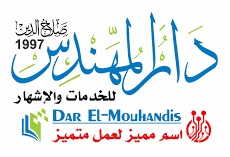Problematic of the seminar
Before gaining ground and becoming what it is today: a powerful tool for the analysis of architectural and urban configurations, space syntax was a paradigm shift that revolutionized the way of apprehending the urban and architectural space. Until then, the prevailing model of thought considered the relationship between architecture and behaviour as the relationship between physical (form, style, spatial organization) and non-physical (response, meaning, stimilu) variables (Hillier, 1987). The merit of Bill Hillier and his colleagues at UCL was to think up a theory of the objects themselves before being able to develop a theory of the social causes and effects of these objects. It was necessary to identify what in these objects can interact with external factors. This is how space was not only dissociated from its receptacle (form), but acquired its autonomy as a determining element in use: Space is the Machine (Hillier, 1996). This way of thinking has also given research in architecture and urban planning a certain autonomy in relation to related sciences, which until then had been dominant.
Today, Space Syntax has established itself as a set of methods and techniques for modelling architectural and urban spaces. The network approach at the scale of a building, a street, a district and a city, establishes a significant correlation between the topological accessibility of spaces and phenomena such as pedestrian and mechanical movements, the orientation and implementation of commercial equipment and services (Porta et al., 2006). The evolution of the method over the past forty years has been phenomenal and its influence has affected four continents, notably through its biannual symposia. In addition to the classic themes dealt with by space syntax such as the relationship between the configuration of space and human behaviour, land use studies, the method, which is constantly evolving and integrating new approaches, new tools, today touches on themes such as mobility, wellbeing, walkability safety, the reduction and increase of carbon emissions (relationship of town planning with the environment). Therefore, Space Syntax is a multi-disciplinary tool to understand various phenomena of the interaction of people and space, at multi-scale of the city, where architects and urban planners are facing broader challenges to meet the ever-changing needs of the society, compelled mainly by sustainability.
To what extent could space syntax contribute in guiding to responsive and inclusive design proposals?
How could space syntax contribute to solve social, economic, cultural, and environmental problems?
************************************************************************************
University of Ferhat Abbas, Setif 1
The Institute of Architecture and Earth Sciences
Laboratory of Housing and Environment
https://laboratoires.univ-setif.dz/L.H.E/
Email: ISSSTA2022@univ-setif.dz





